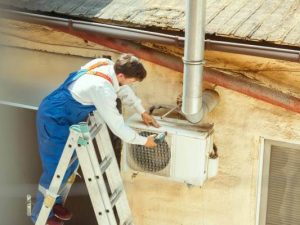And It’s Never Too Late to Harvest Rewards From Frog
Experienced home gardeners know that summer isn’t the only time to reap nature’s bounty from their home gardens. They’re busy at work now planting vegetables that will be ready for harvest this fall.
All it takes is a little careful planning and some tender loving care. But more on that later. The same is true when it comes to your home comfort. When you plan ahead and give your cooling and heating systems the attention they need and deserve, you’ll reap huge rewards, including maximum home comfort, lower energy bills and fewer repairs and breakdowns.
At Frog Heating, Air & Electrical, our team has the seeds you need to ensure total home comfort throughout the year. We’ve planted and cultivated strong relationships with homeowners who trust us for everything from a reliable AC repair in Brentwood, TN to a dependable electrical service installation in Nashville TN.
When it comes to your HVAC and electrical systems, it’s important to rely on the technicians at Frog who have the training and experience to do the work right the first time—every time. But with a vegetable garden, it’s possible—actually enjoyable—to do all of the work yourself once you’re equipped with the right tools and a few simple guidelines.
August is the perfect time to plant vegetables that will be ready for harvest in the fall. In this area, those vegetables include beans, beets, broccoli, Brussels sprouts, carrots, cauliflower, cucumber, kale, leaks, lettuce, parsnips, radish, spinach and Swiss chard.
If you’re new to vegetable gardening, here are some tips to get you started:
Don’t Bite Off More Than You Can Chew
Beginning gardeners should start small so they’re not overwhelmed by too much to learn, to plan and to tend to all at once. When beginners take on too much too quickly, they often give up on a new activity that, if taken in tinier bites at first, can result in a lifetime of enjoyment—and yummy, healthy eating.
Put Down Roots in the Right Place
According to the Farmers’ Almanac, vegetables need six hours of direct sunlight or more each day. The proper amount of sunlight results in tastier, larger yields. So choose wisely when scouting out the location for your garden. Plus, make sure the soil is loamy and boost the nutrients that will help your vegetables grow by adding compost.
Give Your Crops Breathing Room
Make sure to space out your garden properly so larger vegetables, such as corn, don’t overshadow smaller vegetables and so they all have the room they need to thrive. You wouldn’t ask your children to compete for your attention. Don’t ask your vegetables to compete for water, sunlight and nutrients. You can find helpful information about spacing on seed packets and plant tabs.
Quality Counts
It only costs a few extra pennies to invest in quality seeds, which could mean the difference between success and failure. Poor quality seeds are less likely to germinate. They’re not worth the risk.
Size Things Up
A 16×10 feet garden is a good size for a beginning vegetable gardener. According to the Farmers’ Almanac, an ideal garden of this size is 11 rows wide with each row measuring 10 feet long. To best soak up the sun, the rows should run north and south.
As you gain experience and confidence, you might want to expand the size of your garden and add vegetables that need more tender loving care to thrive. You’ll also learn how to troubleshoot problems that crop up.
When it comes to your HVAC and electrical needs, the technicians at Frog are like experienced vegetable gardeners who know how to size up the situation and tend to your every need so you reap a bumper crop of home comfort—winter, spring, summer and fall.
Schedule an appointment with Frog today to harvest the benefits of our cooling, heating, indoor air quality or electrical services. Simply email our team or call (615) 657-4351.






